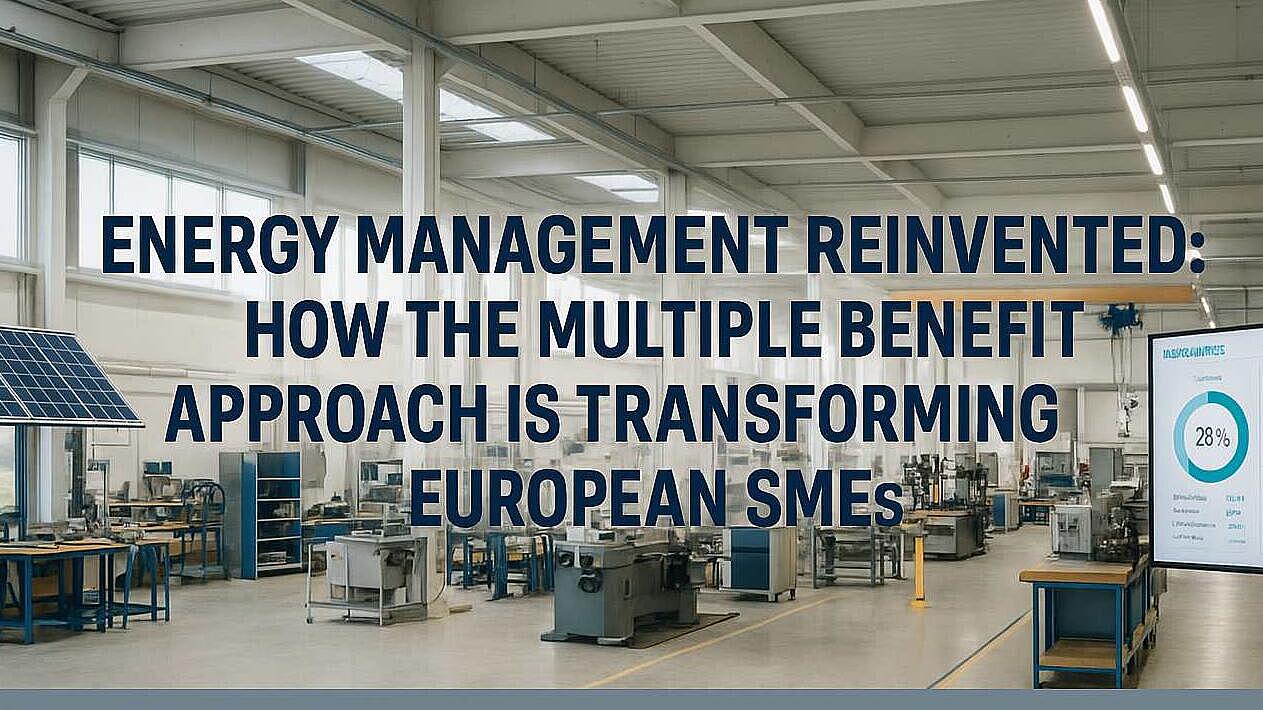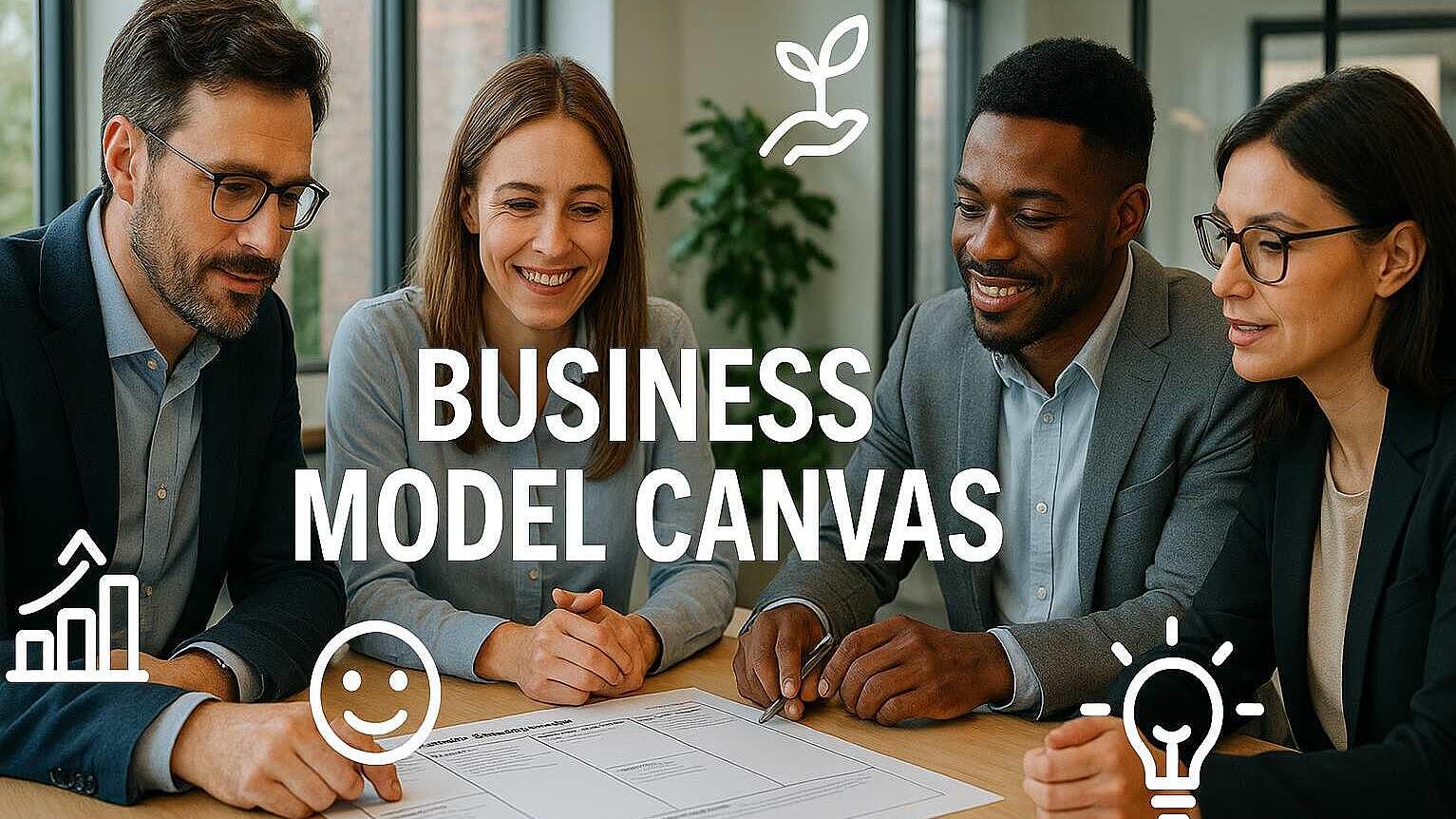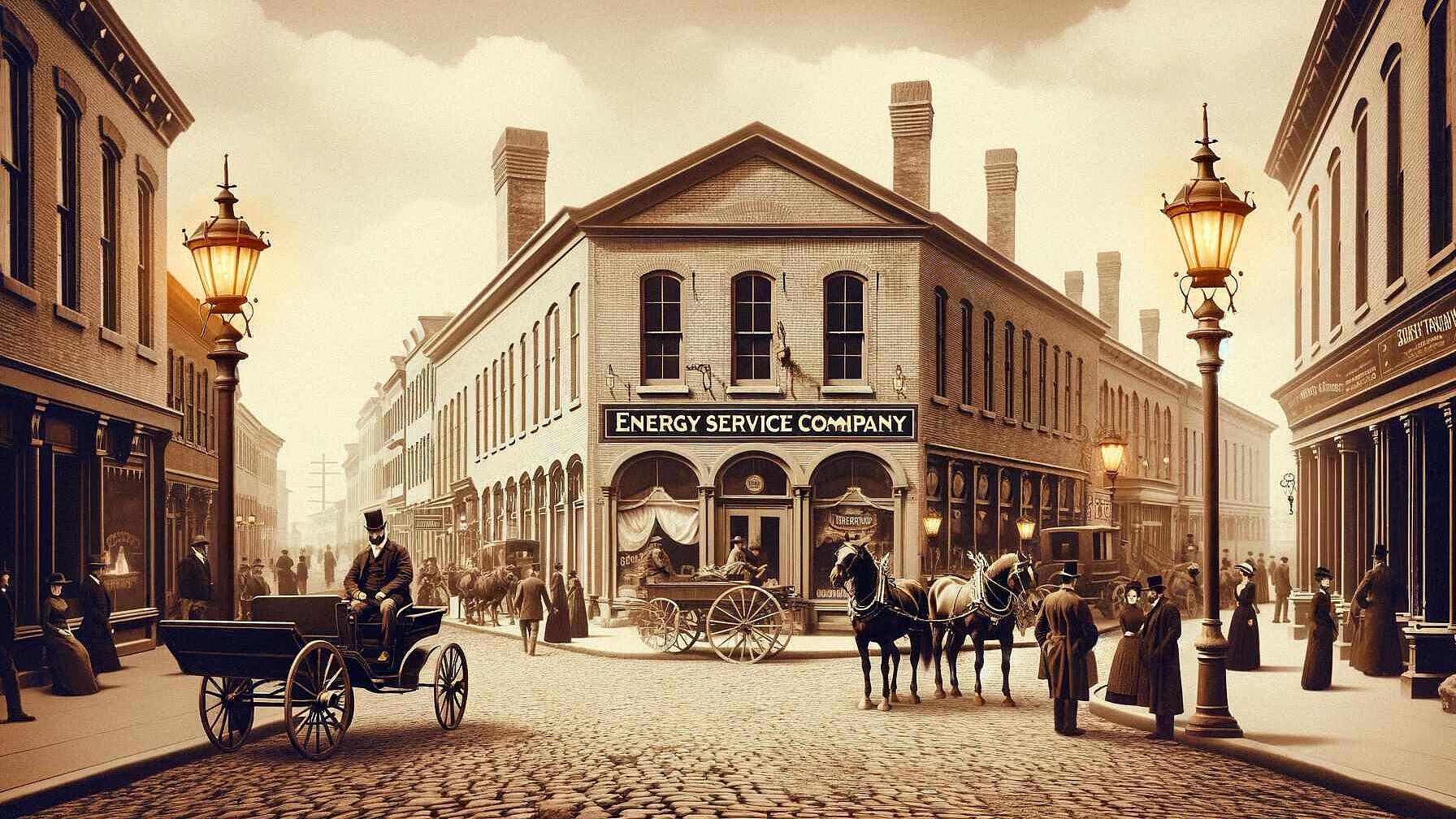 Energy Efficiency
Energy EfficiencyEnergy Management Reinvented: How the Multiple Benefit Approach Is Transforming European SMEs
Summary
The DEESME project, funded by Horizon 2020, presents an innovative Multiple Benefit (MB) approach to energy management in SMEs that goes beyond simple energy savings and cost reductions. This approach is integrated into the company's overall business model and strategic objectives, considering wider organizational impacts such as environmental, safety, and social outcomes. DEESME methodology expands on the ISO 50001 energy management standard, helping companies to develop Extended Energy Management Systems (EnMS) that include non-energy factors and broadening the familiar PDCA (Plan-Do-Check-Act) cycle to encompass these multiple benefits.
The project highlights case studies demonstrating real-world applications of the MB approach, showing how energy-efficient upgrades can also lead to improvements in health, safety, and environmental outcomes. The DEESME guideline also emphasizes that this strategy aligns with EU sustainability policy, supporting participation in EU funds and documenting results for green financing.
The approach encourages cross-disciplinary expertise, integrated thinking, and advocating inclusion of multiple benefits in project evaluations. The paper suggests that integrating energy management with a Multiple Benefit approach not only future-proofs SMEs for Europe's green transition but also creates resilient organizations where sustainability enhances profitability. The paper points to young professionals and students as the future champions who can drive holistic change in the energy sector and the European economy.
Open full article
Energy Management Reinvented: How the Multiple Benefit Approach Is Transforming European SMEs
Picture this: A bustling manufacturing floor in Europe, where every decision about energy efficiency not only trims costs but also sparks a ripple effect—improving workplace safety, boosting employee morale, enhancing product quality, and elevating a company’s sustainability profile. This vision is fast becoming reality, thanks to an innovative methodology at the heart of the DEESME project.
The “Multiple Benefit” (MB) approach, woven into energy management systems, is helping small and medium-sized enterprises (SMEs) across Europe unlock value far beyond simple energy savings. For the next generation of energy leaders, understanding and applying this holistic strategy is key to driving both economic and societal progress.
Beyond Kilowatt-Hours: The New Energy Efficiency Mindset
Energy management in Europe’s SMEs has traditionally focused on direct returns—how much money can be saved, how fast. But as businesses face mounting pressure to meet climate targets, comply with new EU sustainability rules, and compete globally, a broader perspective is taking hold.
The DEESME project (Developing national schemes for energy efficiency in SMEs), funded by Horizon 2020, introduced a pivotal shift. Its central message: energy-saving investments deliver not only lower utility bills but also “multiple benefits” such as:
- Reduced greenhouse gas emissions and environmental impact
- Safer, healthier, and more productive workplaces
- Enhanced corporate reputation and compliance with emerging EU regulations (like the Taxonomy Regulation and the Corporate Sustainability Reporting Directive)
- Greater operational reliability, product quality, and even staff retention
Instead of treating energy efficiency as a standalone goal, the MB approach integrates it with a company’s overall business model and strategic objectives. This means every efficiency action—upgrading a motor, redesigning a process, revamping heating or compressed air systems—is evaluated for its wider organizational impact.
How the Multiple Benefit Approach Works in Practice
The DEESME methodology, built on the international ISO 50001 energy management standard, helps companies systematically weave non-energy factors into their management systems. Here’s how it unfolds:
1. Extended Energy Management Systems (EnMS)
Companies move from simply monitoring energy use to developing an “Extended EnMS,” which also tracks and seeks improvements in areas like workplace safety, water use, environmental compliance, and even staff satisfaction. For SMEs, this is a game-changer—turning what’s often seen as a regulatory burden into a business opportunity.
2. Plan-Do-Check-Act with a Twist
The familiar PDCA (Plan-Do-Check-Act) cycle is broadened:
- Plan: Companies include multiple benefits—like reduced noise, better air quality, or process reliability—when setting energy objectives.
- Do: They implement changes that integrate energy and non-energy improvements.
- Check: Performance is monitored not just in kWh, but also through new indicators such as CO₂ emissions, water savings, or health and safety records.
- Act: The management reviews both energy and non-energy outcomes, driving continual improvement.
3. Real-World Case Studies
The DEESME report features compelling examples:
- A mechanical manufacturer swapped gas heating fans for infrared panels, cutting both energy use and indoor air dust levels—improving comfort and reducing health risks.
- A chemical plant redesigned its steam system, boosting both energy efficiency and operational safety, while minimizing downtime.
- Upgrades to extractor fans not only lowered electricity bills but also cut noise pollution, resolving long-standing complaints from neighboring communities.
Why It Matters: Future-Proofing SMEs for Europe’s Green Transition
For students and young professionals, the Multiple Benefit approach offers a fresh lens on the energy transition:
- It aligns with EU sustainability policy. New directives require companies—not just the big players, but eventually all large firms and many SMEs—to report on environmental and social impacts. Those with robust EnMS and MB strategies are already ahead of the curve.
- It helps businesses stand out. As sustainable finance grows, banks and investors increasingly look for companies that can demonstrate broad, verifiable impacts.
- It’s a talent magnet. Young employees want to work for organizations with purpose—ones that care about the environment, safety, and community, not just profit.
The DEESME guideline also highlights that the MB approach supports participation in EU funds and helps SMEs document their results for grants or green financing.
Seizing Opportunities: Skills and Strategies for Tomorrow’s Leaders
So, how can today’s students and young professionals make a difference?
- Develop cross-disciplinary expertise: The future of energy management requires understanding not just engineering, but also sustainability, communication, and even behavioral science.
- Embrace integrated thinking: Whether you’re in IT, policy, or finance, look for ways to connect energy efficiency with broader business and societal goals.
- Drive change from within: Whether as a consultant, in-house energy manager, or entrepreneur, advocate for including multiple benefits in all project evaluations.
And remember: what starts as an “energy project” can quickly multiply into gains for HR, marketing, and operations. For example, switching to energy-efficient equipment may not just save money, but also improve working conditions, which can boost productivity and staff morale.
Take the Challenge—And Test Your Knowledge!
Are you ready to deepen your expertise and join a new generation of energy and sustainability champions? Check out Enerwhizz—the fast-paced, multilingual mobile quiz game where you can compete in 45-second rounds, climb leagues, complete missions, and win prizes and ET coins. Play now at https://enerwhizz.app/!
Wrapping Up: Key Takeaways for Young Innovators
Integrating energy management with a Multiple Benefit approach is more than a technical fix—it’s a strategic mindset that connects energy, environment, and business value. SMEs embracing this model aren’t just saving energy; they’re building resilient, future-ready organizations where sustainability and profitability go hand in hand.
As the energy sector evolves, those who can think—and act—holistically will shape not only their companies but the entire European economy. Will you be among them?
Sources & more…
More on Multiple Benefits: https://ieecp.org/wp-content/uploads/2023/11/D3.2_DEESME-Final_rev7-v2-23-06-22.pdf
More on D2050, the underlying EU project, check via “all EEIP projects”: https://projects.ee-ip.org/#ongoing-projects
More information on the EnerWhizz mobile quiz game, check: https://www.enerwhizz.info/



